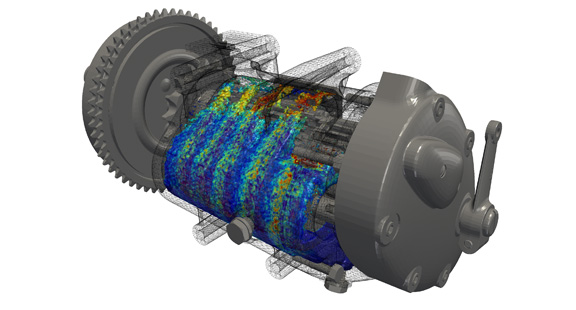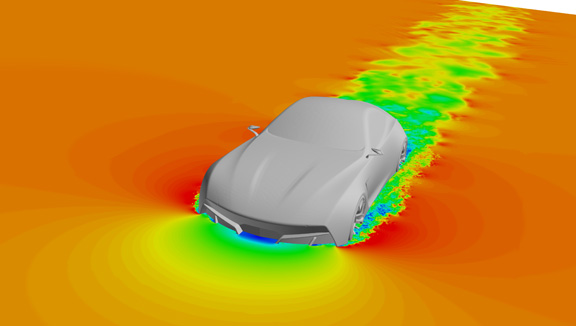
Altair acquires FluiDyna, Germany-based CFD software developer (image courtesy of Altair).
May 11, 2018
This week, when the U.S. simulation software maker Altair acquired Germany-based FluiDyna, Altair gained a GPU-accelerated flow simulation technology.
The two flagship products from FluiDyna—ultraFluidX and nanoFluidX—are developed in NVIDIA’s CUDA programming framework. As such, they can take advantage of the GPU’s processing cores to run CFD jobs faster.
James Scapa, Founder, Chairman, and CEO at Altair said, “We are excited about FluiDyna and especially their work with NVIDIA technology for CFD applications. We believe the increased throughput and lower cost of GPU solutions is going to allow for a significant increase in simulations which can be used to further impact the design process.”
The acquisition follows a three-year partnership that began in 2014, which gives Altair HyperWorks customers access to Fluidyna’s software applications.
The Lattice Boltzman Methods
CFD, considered highly compute-intensive, is reported to benefit from the parallel processing power of the GPU. “Several ongoing projects on Navier-Stokes models and Lattice Boltzman methods have shown very large speedups using CUDA-enabled GPUs,” GPU market leader NVIDIA writes.
In acquiring FluiDyna, Altair has acquired precisely a technology based on the Lattice Boltzman methods referenced in NVIDIA’s benchmark tests.
“All our software packages are leveraging the power of NVIDIA GPUs to massively accelerate your workflow thus saving time and money,” FluiDyna writes. “Based on the Lattice Boltzmann Method and optimized for GPU technology, simulations can be performed [in FluiDyna’s ultraFluidX] within just a few hours on a single workstation.”
Altair already has a CFD offering in its own portfolio. Seven years earlier, in 2011, Altair bought ACUSIM, netting the CFD software AcuSolve in the process. AcuSolve supports GPU acceleration on NVIDIA’s TESLA GPU lines, targeting the high-performance computing (HPC) market.
Altair promotes AcuSolve as a complementary package to the FluiDyna products.
The Flow toward GPU Acceleration
Simulation software developers’ interest in the GPU began with GPU maker NVIDIA’s initiatives to transform what was once a graphics boosting hardware into a general-purpose computing platform. Whereas geometry-sculpting CAD programs involve mostly serial operations (which must be computed one after another), many modern simulation programs are written to speed up with parallel processing (where many computing operations can occur simultaneously). Simulation programs’ use of the GPU’s processing cores gets easier with the introduction of CUDA, a GPU programing environment from NVIDIA.
ANSYS Discovery Live (ADL), launched this February, is another example of GPU-accelerated simulation. As a program targeting the designers, it increases its appeal with the speed with which it executes its jobs. A large part of the speed comes from GPU acceleration.
“We wrote [ADL] solvers from the ground up on GPU’s. Where others might augment compute power on GPUs, we did it natively, embracing its massively parallel nature. Modern PCs have 1000s of cores on their GPUs, vs. a handful of CPU cores. In the process, we had to invent new numerical and computational algorithms,” said Mark Hindsbo, VP and GM of ANSYS.
Subscribe to our FREE magazine, FREE email newsletters or both!
About the Author
Kenneth Wong is Digital Engineering’s resident blogger and senior editor. Email him at [email protected] or share your thoughts on this article at digitaleng.news/facebook.
Follow DE







